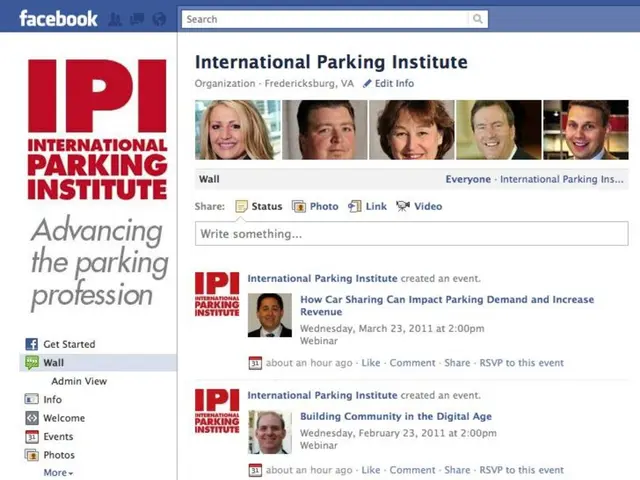Monitoring measles outbreaks across America
Measles Outbreak Hits the US: A Look at the Current Situation
The United States is currently experiencing a significant resurgence in measles cases, with over 1,277 confirmed cases across 38 states and DC as of 2025. This marks the highest annual count in 33 years, and most of these cases are among individuals who are unvaccinated or have unknown vaccination status.
Vaccination Rates and Outbreaks
The current national kindergarten MMR vaccination rate is approximately 92.7%, which is below the 95% threshold needed for herd immunity to effectively prevent outbreaks. Some local areas, like Washington, DC, have managed to increase their MMR vaccination rates to nearly 93% by 2024–2025, showing improvement through targeted public health efforts.
However, these suboptimal vaccination rates have contributed to the ongoing outbreaks because measles requires about 95% coverage to maintain herd immunity. When coverage drops, even small pockets of unvaccinated populations can sustain transmission, leading to widespread outbreaks.
Causes of the Decline in Vaccination Rates
The decline in vaccination rates has been linked to disruptions caused by the COVID-19 pandemic and vaccine hesitancy in some communities. While some regions like DC have successfully improved coverage by building trust and access, many others remain vulnerable, contributing to the ongoing outbreaks nationwide.
Impact of the Outbreak
The ongoing measles outbreaks have raised concerns among public health experts. Measles is a highly contagious airborne disease that can cause serious health consequences or death, particularly for young and unvaccinated children. If a measles outbreak continues for a year or more, the US could lose its measles elimination status, according to the CDC.
Prevention and the MMR Vaccine
Measles is preventable with a highly effective vaccine. One dose of the MMR vaccine is about 93% effective at preventing measles infection, and two doses are about 97% effective. The vaccine is administered in two doses: the first between 12 months and 15 months of age, and a second between 4 and 6 years old.
Conclusion
The ongoing measles outbreaks underscore the need for increased vaccination coverage. Up to 3 of every 1,000 children who become infected with measles may die from respiratory and neurologic complications. The increased concern about measles cases is due to falling vaccination rates and increased travel, according to the CDC. It is crucial for parents to ensure their children receive the MMR vaccine to protect them and contribute to herd immunity.
The high number of measles cases in the US signifies a significant health concern, indicating a drop in vaccination rates.With over 1,277 confirmed cases, the United States is witnessing the highest annual count in 33 years, prompting a call for action in health-and-wellness.Most of these cases are among individuals who either are unvaccinated or have unknown vaccination status, highlighting the importance of workplace-wellness initiatives.The current national kindergarten MMR vaccination rate is approximately 92.7%, placing the country below the 95% threshold needed for herd immunity.Areas like Washington, DC have managed to boost their vaccination rates, showing improvement through targeted public health efforts, but remain vulnerable to outbreaks.Measles requires about 95% coverage to maintain herd immunity, and the decline in vaccination rates has led to ongoing outbreaks.This decline can be traced back to disruptions due to the COVID-19 pandemic and vaccine hesitancy in certain communities.The loss of herd immunity allows for the spread of the disease even among populations with good individual immunity, illustrating the importance of fostering industry-wide workplace-wellness.Measles is a highly contagious airborne disease that can cause serious health consequences and even death, particularly for young and unvaccinated children.If the measles outbreak persists for more than a year, the US could potentially lose its measles elimination status, as stated by the CDC.The MMR vaccine is a preventative measure that has proven to be highly effective, with one dose offering about 93% protection and two doses offering approximately 97%.The MMR vaccine is administered in two doses: the first between 12 months and 15 months of age, and the second between 4 and 6 years old.The ongoing outbreaks underscore the necessity of encouraging vaccination and ensuring children receive the MMR vaccine to protect them and contribute to herd immunity.Lower immunization rates can lead to the resurgence of other medical-conditions such as chickenpox and pertussis, highlighting the importance of maintaining optimal health and wellness.Chronic diseases, like cancer, respiratory conditions, and digestive health issues, can also hinder one's ability to recover from measles infection.Eye-health issues can develop from measles infection, potentially leading to vision loss or blindness, emphasizing the importance of maintaining overall health, including eye-health.Hearing loss can also occur due to measles infection, highlighting the need for prioritizing health-and-wellness and seeking treatments as soon as symptoms appear.Sexual-health issues, such as HIV, can be complicated by a weakened immune system due to measles, underscoring the importance of addressing national health concerns comprehensively.Individuals with autoimmune-disorders may experience worsened symptoms following a measles infection, emphasizing the importance of individual awareness and seeking prompt therapies-and-treatments.Climate-change can indirectly affect health outcomes by exacerbating conditions that contribute to disease transmission, such as poor air quality and increased mosquito populations.By promoting renewable-energy and reducing greenhouse gas emissions, we can help mitigate the effects of climate-change on public health.In addition, supporting manufacturers in their transition to greener practices can help contribute to improving overall health and wellness.Mental-health concerns and stress can be exacerbated by health crises like the measles outbreak, making it essential to prioritize and invest in mental-health support.Mens-health encompasses various aspects, including cardiovascular-health, skin-care, and specific men's medical issues.Supporting the advancement of men's health research is crucial in the fight against preventable health issues.Womens-health is another critical issue that confronts the nation, with a focus on reproductive health, aging, and specific women's health concerns.Encouraging women's health education and accessible healthcare can contribute to long-term health outcomes for women and their children.Parenting involves much more than caring for children: it requires being informed about their nutritional needs, ensuring access to safe products, and staying up-to-date on the latest health and wellness information.Weight-management plays an essential role in maintaining overall health and wellness, especially given the prevalence of obesity in the United States.Ensuring the availability of healthy food options, affordable fitness and exercise programs, and access to health education can aid in managing weight.Aging is not only about growing old; it is also about maintaining health, managing chronic diseases, and fostering an active, enjoyable lifestyle.The aging population demands a shift in healthcare priorities and the expansion of facilities focused on elder care and wellness.Investing in research and innovation for therapies-and-treatments, as well as promoting a healthy lifestyle, can help mitigate the health challenges associated with aging.Health issues disproportionately affect specific populations, such as racial and ethnic minorities, low-income households, and marginalized communities, highlighting the importance of addressing diversity-and-inclusion in health initiatives.The aviation and aerospace industries, as well as oil-and-gas production, have an impact on the environment, with potential consequences for health.Supporting environmental-science research can help us better understand these effects and identify potential solutions.Enacting policies that encourage cleaner energy sources, like wind, solar, and hydroelectric power, can promote overall health and wellness for future generations.Finance, energy, and real-estate industries play crucial roles in shaping health outcomes by influencing access to clean water, safe housing, and affordable healthcare.Entrepreneurship, transportation, leadership, retail, public-transit, small-business, and the automotive industry can all contribute to promoting health and wellness by implementing sustainable practices.Investing in the health and wellness sector, while considering factors like social responsibility, can yield both economic returns and positive health outcomes for society.*By prioritizing health, wellness, and sustainability, we can create a better future for all.








